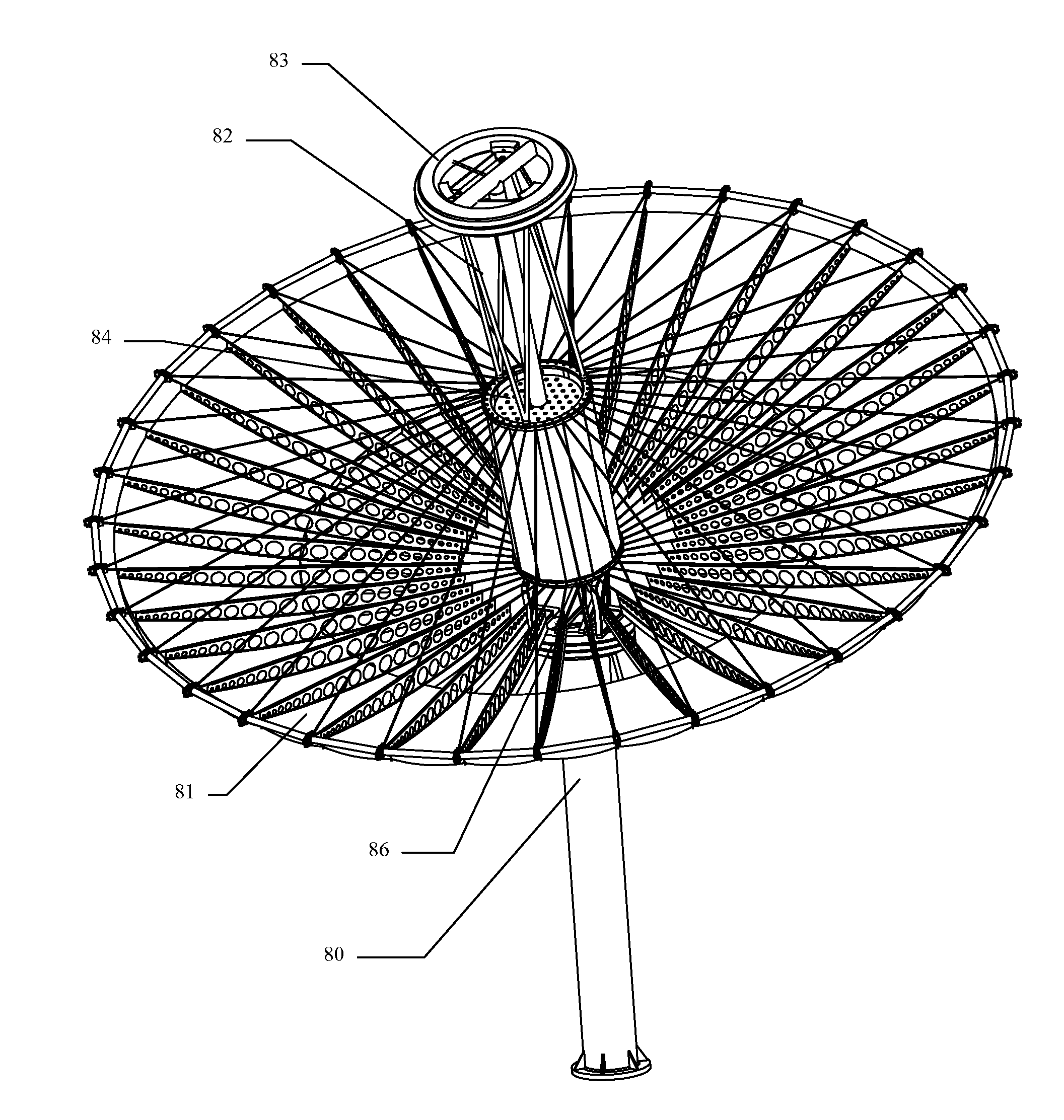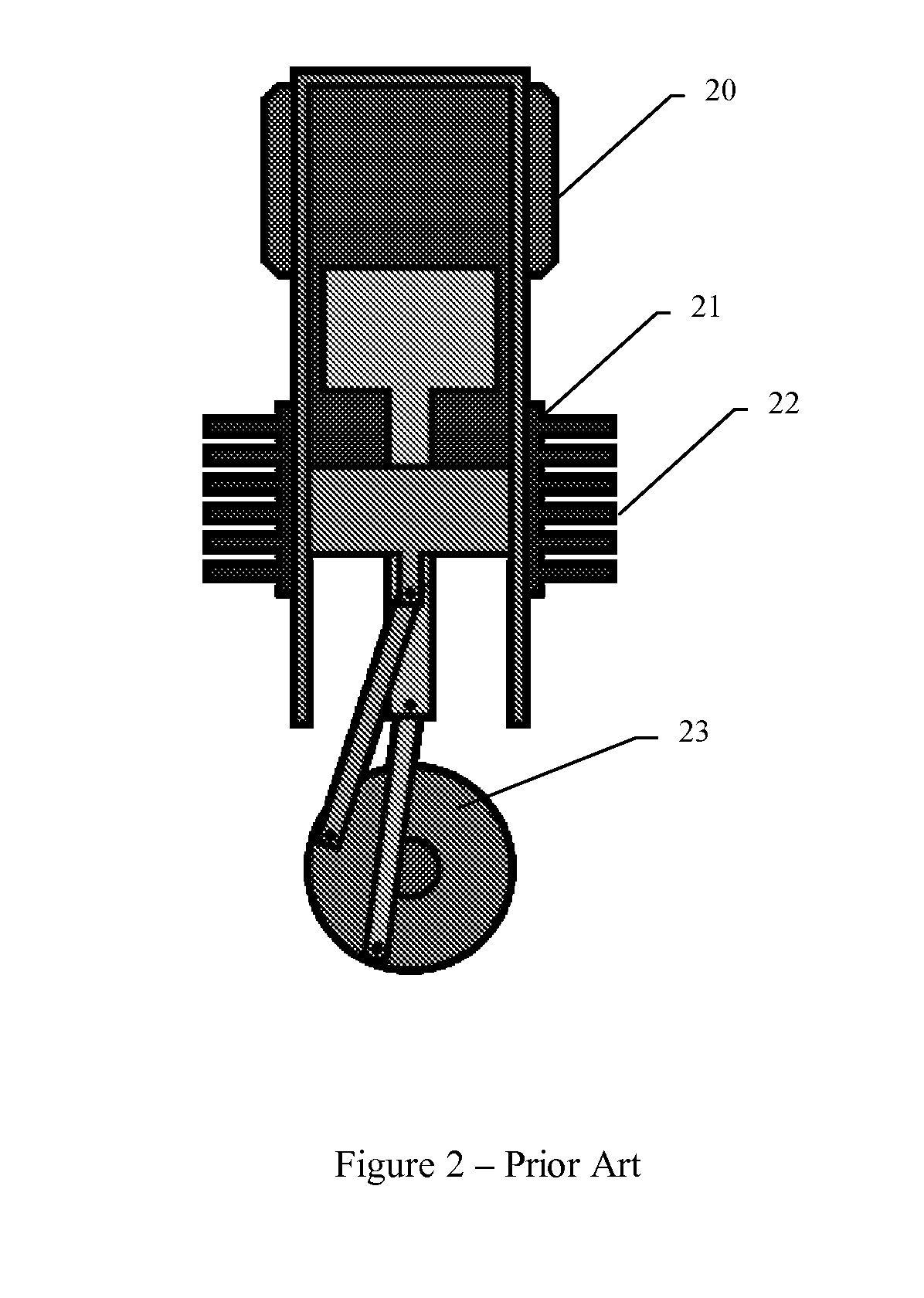Solar receiver
a solar receiver and receiver technology, applied in the field of solar energy systems, can solve the problems of time-consuming alignment, limited performance of the above-mentioned “truss and glass” dish structure, and the need to re-do the alignment, so as to enhance the precision of the formed surface and enhance the effect of precision
- Summary
- Abstract
- Description
- Claims
- Application Information
AI Technical Summary
Benefits of technology
Problems solved by technology
Method used
Image
Examples
Embodiment Construction
[System Level and Optical Path]
[0090]FIG. 6 shows an embodiment of this invention using a solar thermal PCU. The system is comprised of a pedestal [60], pivot actuation machinery [66] at the top of the pedestal, a dish reflector [61], a hexapod mount [62], a thermal PCU [63] having a hot end [64], and a heat exchanger [65]. In this embodiment the hot end is shown surrounded by heat absorbing coils in which the thermodynamic fluid flows, but in other embodiments the heat can be transferred directly through the wall of the hot end.
[0091]Note that in this embodiment the thermal engine is oriented so that its hot end is away from the dish (opposite to the conventional mounting scheme), and the light illuminates its entire perimeter, transferring heat inwards. The structure of the dish is discussed further below under the sections “Alignable Carrier Structure” (ACS) and “Reflective Tiles”, and the placement and structure of the Thermal PCU is discussed under the section “Thermal PCU”
[009...
PUM
 Login to View More
Login to View More Abstract
Description
Claims
Application Information
 Login to View More
Login to View More - R&D
- Intellectual Property
- Life Sciences
- Materials
- Tech Scout
- Unparalleled Data Quality
- Higher Quality Content
- 60% Fewer Hallucinations
Browse by: Latest US Patents, China's latest patents, Technical Efficacy Thesaurus, Application Domain, Technology Topic, Popular Technical Reports.
© 2025 PatSnap. All rights reserved.Legal|Privacy policy|Modern Slavery Act Transparency Statement|Sitemap|About US| Contact US: help@patsnap.com



